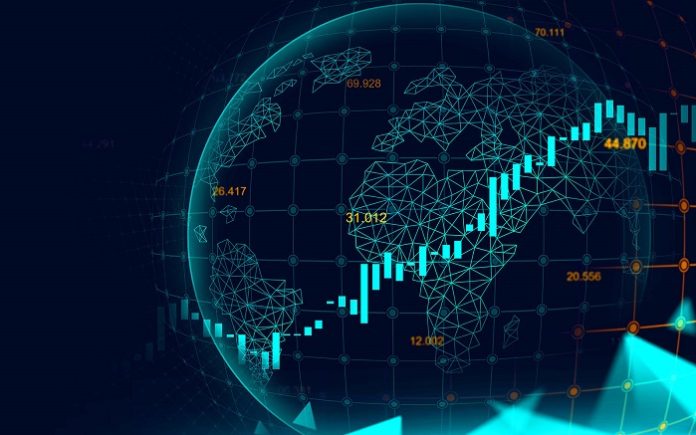In today’s competitive environment, there is much less room for inefficiencies, but the good news is that technology can streamline and enhance overall company processes. Rapid transitions are being triggered by new technological advances across all industrial verticals. Cloud computing, mobile, the internet of things (IoT), technologies such as virtual reality, machine learning, and, most recently, blockchain have all ushered in a new era of client experiences and expectations. Customers want high-quality selections, safer merchandise, ethical sourcing, accountability, transparency, and faster delivery, as well as flexible methods to acquire and utilize the products. The retail click-and-collect paradigm arose as a result of such technologically enabled possibilities.
Supply chains are performing the hard lifting of managing a transition that is nothing shy of epic in order to meet customer and industry needs. Surprisingly, the same set of techniques that enable tighter, more efficient supply chains may also be used to improve customer experience, engagement, and loyalty.
Supply chain management technologies that improve customer service:
Internet of Things (IoT)
Sensors, instrumentation, connectivity, and machine learning have come a long way in the last ten years. Inexpensive yet effective sensors closely monitor and feed data to the cloud or the local edge via a variety of communication routes. Many elements of corporate processes can be expedited by using machine-learning-based conclusions, and problems can be identified and addressed instantly.
IoT is being used in the supply chain to track container ships, fleets, product location, and quality tracking. IoT is utilized within the factory and in the yard to remotely locate, manage, and control machines.
Artificial intelligence (AI)
AI has huge business benefits due to its capacity to generate correct conclusions from data. AI is an umbrella word for a set of capabilities that process and analyze data, allowing decision-makers to make more informed decisions rather than depending on gut instinct or precedent. AI is used to either augment human decision-making or automate specific portions of business processes.
Today’s microprocessors, advanced computational and scientific algorithms, programmer tooling, and cloud technology make leveraging this technology a viable option. Artificial intelligence is used in supply chain procurement, inventory, logistics planning, supplier relations, and logistics.
AR\VR
Until recently, augmented reality (AR) and virtual reality (VR) were largely used in the entertainment industry. Mixed reality (MR) is an umbrella term that encompasses the AR and VR spectrums. When we superimpose digital information on the physical environment, our interactions with it shift fundamentally. We can drastically improve how we do a task.
While MR is still in its infancy, it is picking up steam and acceptance in the supply chain. Stock pickers in some warehouses, for example, employ augmented reality to acquire the next right choice of recommendations. A stock picker in a warehouse can be considerably more efficient with AR-guided picking, just as GPS offers us turn-by-turn directions. Repair technicians in the field are using AR to acquire step-by-step repair instructions. A manager can visually track and control many places at the same time using VR, and obtain the necessary information instantly via IoT data streaming from connected devices, trucks, warehouses, factories, and items. This amount of fast information access to stakeholders is unprecedented.
Robotics
For many decades, robots have been a cornerstone of manufacturing. Robots can now execute a wide range of jobs thanks to recent advances in machine learning and sensing. Many jobs in a warehouse are repetitive and hence lend themselves nicely to robot-based automation. Robots are used to transport goods from one section of the warehouse to another for tasks such as pick-and-place.
Furthermore, drones equipped with powerful imaging technologies can count the inventory of goods in the warehouse considerably more effectively and in a matter of a few minutes than humans can. In the near future, we will also see self-driving vehicles and sidewalk hauliers that will quickly deliver goods to customers.
Blockchain
This is a brand-new and fast-developing technology. Blockchain is a platform, a technical architecture, and a method of solving a certain class of issues all at once. Blockchain, by combining numerous concepts from distributed computing, networking, encryption, economics, and mathematics, provides us with the potential to create a common, tamper-resistant, shared, confidential, single version of truth for all network participants.
Blockchain is being examined (or used) in supply chain tracking of product provenance, product voyage, application automation, paperless bill-of-lading, change of possession, and trade financing and settlements.
Summary:
The combination of these five innovations is assisting supply chains in lowering costs, minimizing waste, lowering risk, lowering losses, improving transparency, and increasing customer happiness. While each of these systems can be utilized independently of the others, combining them offers new levels of efficiency and potential. Taking tiny steps initially and growing up from there, like with most technology endeavours, reduces the danger of failure.
Authored Article by:









